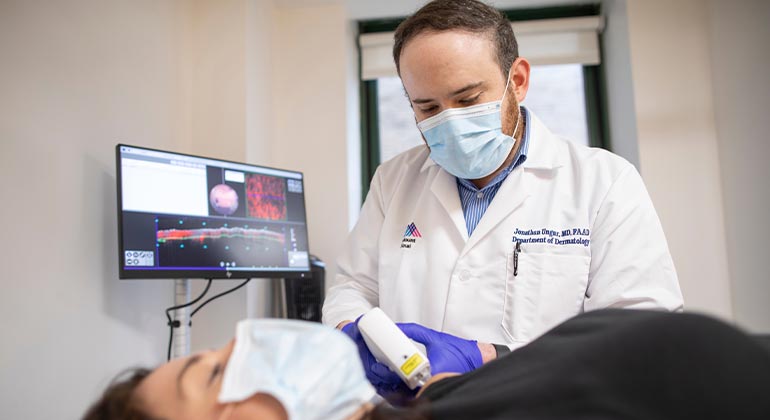Pigmented Conditions

Skin pigmentation refers to the color of your skin. If you have a skin pigmentation disorder, it can affect your skin’s appearance. Certain cells in the skin, called melanocytes, make melanin, which gives your skin its color. We all have different shades of color because we all have different levels of activity in these cells, which is normal. If your body makes more melanin, your skin gets darker. If it makes less, your skin is lighter. Some pigmentation disorders affect just a small area; others affect your entire body. Here are some of the most common skin pigmentation disorders.
- Age, natural wear, and constant sun exposure can cause skin to develop areas of discoloration. One common condition is called solar purpura (or senile purpura). This refers to dark purple or brown marks, usually on the arms and legs that are a result of easy bruising because the skin and blood vessels in the skin become more fragile with chronic sun exposure. This is generally harmless. We tend to treat it mostly for cosmetic purposes. Some patches of discoloration develop into skin cancer. For instance, aging and chronic sun exposure can actinic keratosis, which is a common, precancerous condition and is easily treated. It is important to wear sunscreen consistently when outdoors to help prevent sun damage and skin cancer.
- Albinism is an inherited condition in which you have little or no melanin pigment in your skin. The amount of melanin you have determines the color of your skin, hair, and eyes. If you have albinism, your skin and hair are probably much lighter than your relatives’ skin and hair. Melanin is in other body parts, such as the eyes, so it albinism can cause vision problems. Melanin also helps protect your skin from sun damage. People with albinism are very sensitive to the effects of the sun, and have an increased risk of skin cancer.
- Birthmarks are colored spots that appear at or shortly after birth. They can be brown, tan, black, pale blue, pink, white, red, or purple. Some are flat, others are raised. If a birthmark is a rubbery bright red, we call it a hemangioma. Most birthmarks are harmless, but it is wise to get them evaluated by a dermatologist. Birthmarks often fade as you get older. We can remove a birthmark if necessary.
- Melasma is a common skin condition that appears as dark patches, usually on the face. It is more common in women, though it can be seen in men. It is harmless, though we can treat it for cosmetic reasons. The most important factor in treating it is consistent sun protection with sunscreens and physical blocks, such as hats. Other treatment options include topical skin lightening creams, chemical peels, and lasers.
- Vitiligo involves complete loss of pigment in the skin. The affected area can be small or large. While there are usually no symptoms from the rash, vitiligo can significantly change your appearance, especially on areas like the face. Vitiligo can also be associated with conditions like hypothyroidism and anemia, so it is important to tell your doctor about any symptoms you have. Vitiligo can affect any race, but is more noticeable if you have darker skin. There is currently no cure for vitiligo, but we can treat it with a combination of topical medications, narrow-band ultraviolet B phototherapy, and excimer laser. We were the first to patent the use of the excimer laser to treat vitiligo.